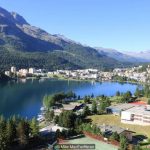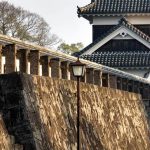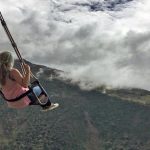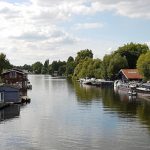Trolltunga is one of Norway’s most famous geological sites – and one of its most controversial.
We reached Trolltunga after seven hours, 13.5km and 1,000m of elevation gain. The fog rolled in as a line of 35 people waited to take their picture on the iconic cliff. Translating to ‘Troll’s Tongue’, Trolltunga juts out of a steep mountainside 700m above Lake Ringedalsvatnet near Odda in south-western Norway. Formed 10,000 years ago during the Ice Age when a glacier frozen to the mountain broke off, it has in recent years become one of Norway’s most famous geological sites – and one of its most controversial.
Deciding we’d wait until the next morning to have our picture taken on the rock, my hiking partner Jacqueline and I were shown to our tent by our day guide. The only ones in our group to stay overnight, we tossed our rucksacks in the already-pitched tent about 500m from the cliff edge and took a nap. A few hours later, our overnight guide Erlend Indrearne arrived with a young couple from China who would camp with us. It was raining, so we all took shelter in the small emergency cabin next to our tents to cook meatballs over a single burner and drink cups of Solboer Sirip (a redcurrant juice) mixed with chilled water. Wind blew in through the cabin’s broken window, and the wooden floors creaked with every shift in bodyweight as we tried to get comfortable.
“How many hikers usually have to turn around?” I asked, laying a damp sleeping bag from the storage room across mine and Jacqueline’s laps. I thought back to the beginning of the hike when two people out of our group of 20 turned back after 45 minutes of steep hiking.
“At least one or two in every group.” Indrearne replied, dishing the warm meatballs onto five plates. “Many of them come unprepared and don’t understand the intensity of nature here. Or they come with no respect and leave their garbage scattered everywhere.”
“Is it just tourists who leave behind rubbish?” I asked. “Or Norwegians too?”
“It’s really the tourists who take advantage of allemansratten,” he said. “Norwegians know better. We were raised on fjellvettreglene.”
Although a traditional right from ancient times, allemansratten has been part of the Outdoor Recreation Act since 1957. The rules are simple: you can sleep anywhere as long as you stay at least 150m away from the nearest residency, and if you sleep more than two nights in the same place, you must ask the landowner’s permission. Most important, though, is that those who practice allemansratten should have respect for nature, the wildlife and the locals.
Norway is not the only country to practice this ‘right to roam’ law. Other countries include Finland, Iceland, Sweden, Latvia, Austria, the Czech Republic and Switzerland. What separates Norway from the rest, however, is fjellvettreglene.
Fjellvettreglene, known as Norway’s ‘mountain code’, was introduced after a several accidents occurred during Easter of 1950. After 15 people died in the elements during another Easter of 1967, the Norwegian Trekking Association and The Red Cross announced their campaign ‘Welcome to the mountains, but be responsible’. Fjellvettreglene, which encourages people to have a healthy and respectful relationship with nature, has since become a crucial part of Norwegian culture. It includes points such as planning your trip and reporting wherever you go, bringing necessary equipment to assist yourself and others, always knowing where you are, seeking shelter if necessary and feeling no shame in turning around.
“Fjellvettreglene taught us nature doesn’t care about our egos. We should show as much respect and take as much caution as possible. Take this hike, for example,” Indrearne explained. “For people who aren’t experienced hikers, this is considered extreme. Not many tourists realise that. For Norwegians, we’re hikers. We grew up with this nature. We know how powerful it can be.”
























































































